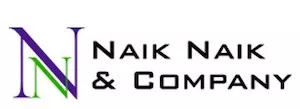This is an important decision by the United States Supreme Court in trademark law which involves a disagreement between Kellogg's, a prominent food manufacturing company, and National Biscuit Company (Nabisco) a cookie and cracker manufacturing company. This lawsuit is about National Biscuit's copyright infringement accusations. One of the allegations was regarding usage of the word "Shredded Wheat" and the resemblance of the form of Kellogg's cereal biscuits which was like that of the Nabisco's biscuit, and Kellogg's usage of the image of two pillow-shaped cereal biscuits dunked in milk on the carton packaging. The complaint over the image was based on trademark law, and two additional concerns were about Kellogg's was attempting to "pass off" its cereal falsely.
Company Profiles
Kellogg corporation is a global food manufacturing corporation based in the United States. It manufactures cereals and convenience foods such as Apple Jacks, Corn Flakes, Special K, Rice Krispies, Kashi Pringles, Nutri-Grain, and others.
The National Biscuit Company (Nabisco) is an American cookie and snack manufacturer based in East Hanover, New Jersey. Chips Ahoy! Ritz Crackers, Venezuela, Teddy Grahams, Belvita, Oreos, Triscuits, and Wheat Thins are among its goods for the United States, United Kingdom, Mexico, Bolivia, and other regions of South America. Shredded Wheat Company, the manufacturer of Shredded Wheat cereal, was purchased by National Biscuit Company.
The issue the arose in this case was whether a party is allowed to produce and sell a product that is unprotected by trademark or patent?
Background
When Perky's patents expired in 1912, the Kellogg Company began making shredded wheat cereal. Kellogg discontinued manufacture of their version in 1919 because of the Shredded Wheat Company's opposition. Kellogg Company resumed manufacturing shredded wheat in 1927, prompting the Shredded Wheat Company to file a lawsuit. In 1930, the National Biscuit Company purchased the Shredded Wheat Company; subsequently, Nabisco sued Kellogg for unfair competition in both Canada and the United States. In its case, Nabisco protested about Kellogg's use of the name "Shredded Wheat," the closeness of its cereal biscuit form to that of Nabisco cereal biscuits, and Kellogg's use of an image of two pillow shaped cereal biscuits immersed in milk on the product box. The lawsuit over the image was based on trademark law, while the other two were based on Kellogg illegally "passing off" their cereal as Nabisco's. Because "Shredded Wheat" was descriptive in nature, Nabisco was unable to register it as a trademark, and the case was denied by the US Patent and Trademark Office.
Court's Opinion
The US Supreme Court dismissed Nabisco's lawsuit in a 7-2 decision authored by Justice Louis Brandeis, allowing Kellogg to continue manufacturing their shredded wheat cereal and calling it "Shredded Wheat." The court decided that the cereal form was functional and may be duplicated because the patent had expired, because the use of unfair competition and trademark laws might otherwise be used to limit rivals' ability to make any competing product, even if the patent had expired. The court stated that the name Kellogg was prominent on all the defendant's cartons in the photograph of the two shredded wheat biscuits in the bowl of milk, minimizing the possibility of confusion, and thus there was no illegal "passing off" of Kellogg cereal biscuit as having been created by Nabisco. The court concluded that the phrase "Shredded Wheat" was generic and hence could not be protected by IPR law, and thus invalidated Nabisco's contention that a "secondary meaning" had been acquired under case law. If an article is not protected by a patent or trademark, its goodwill is shared and the rights are shared by everybody. Where rights are not safeguarded, the consumer public is keenly interested. Kellogg has become a functional milestone that cannot be protected under unfair competition or trademark rules since it would impair rivals' ability to create a competing product. The investment by Nabisco in the shredded wheat product did not grant it control. control the usage of the cushion form once the patent expires.
Conclusion
The theory of genericide is established by this judgement, and it provides the groundwork for future issues involving trade dress and how they should be addressed. However, it highlights the relevance of attempting to seize a previously protected product and later using a second patent, a type of intellectual property protection to safeguard it in the future, and how in most circumstances this will not be tolerated.
The content of this article is intended to provide a general guide to the subject matter. Specialist advice should be sought about your specific circumstances.


